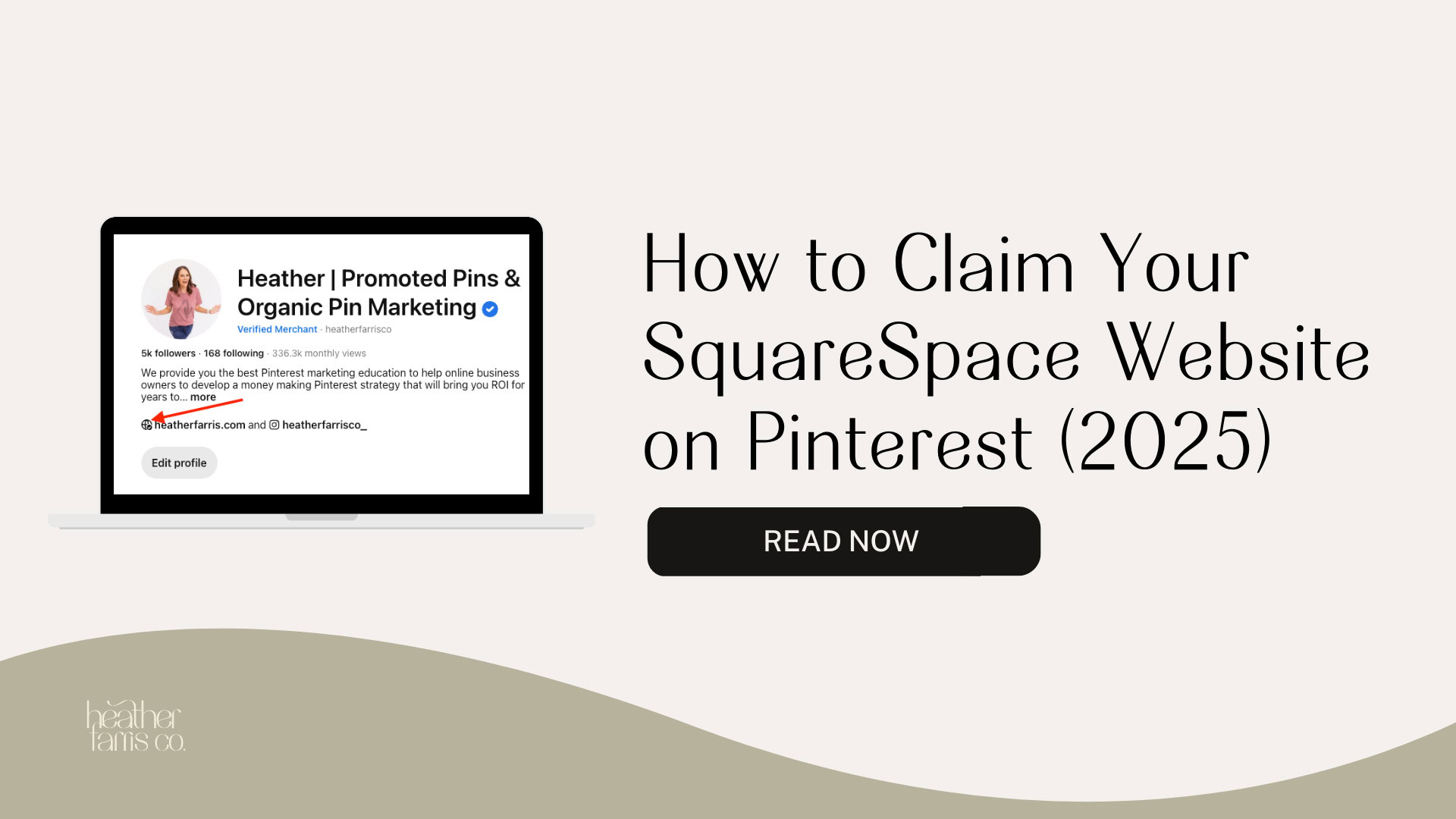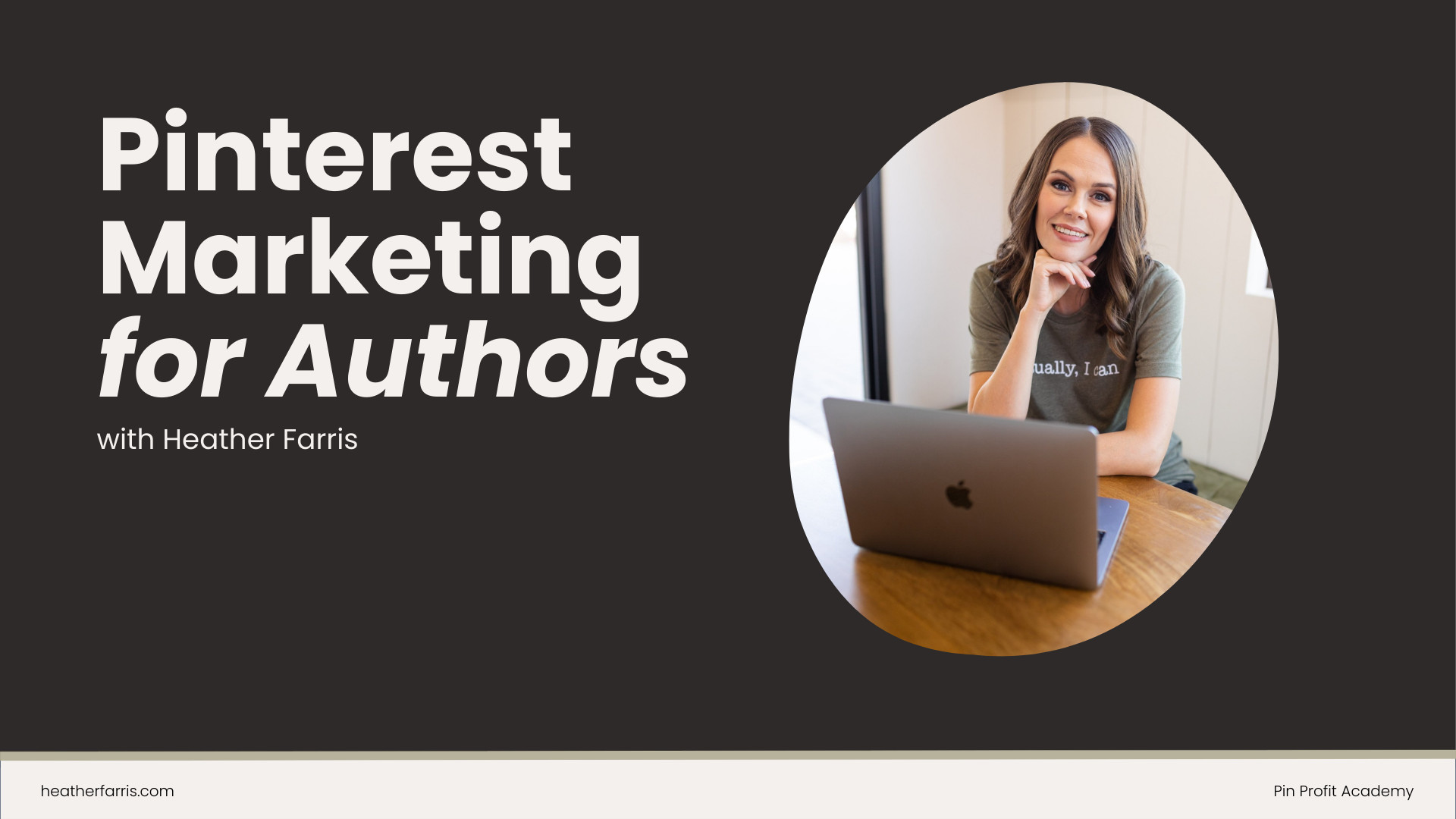Heather is a seasoned
Pinterest marketing expert & educator using the platform since you could reach the bottom of the feed - 2010.
About Heather Farris >
How to Create a Client Onboarding Process Using ClickUp, Honeybook, and Zapier
April 3, 2022
Did you know you can shortcut client onboarding using a couple of systems to make things more automated and smooth? In this tutorial, I will walk you through my client onboarding process using three tools.
- HoneyBook is a CRM that helps you invoice, send contracts proposals, and stay on track with any calendar appointments you might have booked. I use HoneyBook for all of my invoicing, proposals, and contracts.
- I use ClickUp for all my project management for the clients.
- The third tool I use is Zapier. It’s like the glue in this onboarding system I use to automate between the two tools.
I will walk you through how I set this up and how you can utilize the same system.
My client onboarding process with ClickUp, Honeybook, and Zapier
This tutorial will provide detailed information on how to set up a client onboarding list with ClickUp and then put that information between Honeybook and ClickUp together.
This tutorial does not include Integromat, but that is also an option if you wish to use Integromat. I cannot speak to the available options with that tool with HoneyBook, but I can say that this works with Zapier, HoneyBook, and ClickUp.
You don’t necessarily have to be on the paid plan for Zapier to make this work. I wasn’t on the paid plan for Zapier until January this year, when I upgraded for other reasons.
Let’s dive right into it.
RELATED: Using ClickUp for Client Management
Create your ClickUp List
First things first, we need to set up ClickUp. You will come into your ClickUp and set up just a basic client onboarding list.
You want a simple client onboarding list with a ‘To do’ and ‘Complete.’
Create your onboarding form on ClickUp
You then want to come to click View and add a form.
In this form, you will set up all of your onboarding information. This form will include whatever questions you want to send to your clients. You will add them here.
I would suggest adding the Task Name and then changing this to be Full Name. So when you send this to your client, they fill out their name in the task name. Then when the form is completed, it comes through with the client’s name as the task name.
From here, you’re going to want to set up custom fields for whatever other information you need to add. For example – Create a Google Drive folder and paste the URL. You could set this up as a website URL, but I did it this way instead.
One of our common questions is ‘Are you currently running ads on another platform?’
You will want to create more than one onboarding form, considering how many services you offer. Not every client that you onboard is going to answer the same questions.
So for my company, we have:
- Mentorship
- organic Pinterest marketing
- ads management
These three services alone require different onboarding because those clients need different things. So the question ‘Are you currently running ads on another platform?’ would be my ads onboarding form.
Then you can add all of the information and even files.
RELATED: 6 Pinterest Tools I Use as a Pinterest Manager That Won’t Break the Bank
Different needs for your ClickUp forms
Typically, if I create forms like this, I will make sure my clients are not confused about what I am asking from them. For this, I add a little text box with the description. I can go into Custom fields and add just a little text that explains the process. Now add that above the form that they are filling out.
If you want to edit any of these forms or placeholders within your forms, you can edit the form by clicking the three dots. Or you can delete them and start over.
From here, I like to have it redirect to a thank you page saying ‘Your form has been accepted. Thank you so much.’ I removed the ClickUp Branding. My buttons are always black, but I leave the text the same.
As soon as this page is completed and they reach that Thank you page, there will be a calendar booking link on that Thank you page so that they can book a kickoff call if they choose to book one.
Not all of our clients take us up on that offer, but sometimes they do. Once you have your onboarding form set up, you click over to Viewing, and from here, you will copy your link.
And this is the part in Honeybook you would set up in the automation workflow.
How to use Honeybook emails?
Right now, in my HoneyBook, I have it set up to where my onboarding forms are coming through Honeybook. However, I am moving all of those over to ClickUp because it is a lot simpler. I have tested it out with one of my services, and I liked it. So now I have to move all of the others over.
Once inside HoneyBook, you will come into your Automations and set up your automation. If you don’t have all of your emails set up first, you will need to do that. If you go to My Templates, you will set up your email for the questionnaire.
So we will have an email in Create a new email and name it Promoted Pins Onboarding. Give it a subject line. I usually use the default ones from Honeybook because they work really well. So in the subject line, I will add: A few more details needed.
Then I will go into the body of the email where I will say: Fill out the onboarding form here. Then add the link with the onboarding form. Then finish your email and get it all set up. All the changes will be automatically saved.
How to use Honeybook automations?
We will then hop on to Automations and create a new automation. I don’t want to edit anything that I have currently going on.
We will add our action, which will be Send Email and then find the email that you just set up, and you will say this is the email I want. If you want to preview and edit it, you can. Then you move on to When.
The three steps here are:
- What action
- What Template
- When to send it
I usually choose Zero days after the contract is signed. I want them to sign and pay for the contract before they get any onboarding information. Then click Save.
Now you can set it up to require approval, but that’s just more work that I have to do, and I don’t want to do that.
Beyond this, inside of my automation, I have a post-client feedback form set up to get feedback from my clients automatically.
I call it feedback because not everyone likes to give testimonials, but they will provide feedback.
In many cases, the feedback is positive, so that’s why I call it feedback. If you don’t want to use it, you don’t have to.
I will name this Promoted Pins Test so that we know, and then we will click Save.
RELATED: How to Create a Blogging Workflow Using Clickup
Open Zapier and connect HoneyBook and ClickUp
Now that you have everything set up in Honeybook and ClickUp, I will show you my existing Zap. So from HoneyBook to ClickUp, this is my promoted pins onboarding right now.
You can even set this up to be in Zapier if you wanted to, but I just have this piece in here, and then I know it’ll Zap over.
We have a new project booked in HoneyBook as the trigger. You need to connect your HoneyBook. If you’ve never done this, it will automatically prompt you to connect: HoneyBook connect ClickUp.
So you will choose the trigger: New project booked in HoneyBook. Then create a task in ClickUp. When it creates that task, it will have you come in and tell it where you want all of this to go and what you want the name to be. Typically, I choose the Project type and the Project name.
When this task zaps over to ClickUp, it is just for me to know that they have finished their onboarding process in HoneyBook.
That way, I’m not constantly having to go and check HoneyBook. This prompts me to know that they have paid and signed their contract and paid their invoice. I can then check ClickUp again and see that they have filled out the onboarding form.
So this is the Zap from HoneyBook to ClickUp. Then, as soon as HoneyBook automation finishes their proposal, they will send the email for the onboarding piece, which will come into this board as well. So let me show you what that looks like.
More Zapier setup into workflow details
If we click viewing, we’re just going to fill out the onboarding form and then click submit.
Right now, it’s just the onboarding and thank you things. I’m going to set it up to be a third-party URL.
You can see it comes through with the due date a couple of days from now, and it assigns me. I have that automation set up inside of ClickUp as well.
When a task is created to change the assignee to me and change the due date, I always put plus 48 hours because that’s what I tell my clients. I tell them as soon as you finish onboarding, I have 48 hours to begin your onboarding and begin your project, minus any weekends or holidays.
So I know from here that they have now filled out this information. It comes through as a custom task. They have inputted all the information, so I don’t have to copy and paste it from HoneyBook to ClickUp, which saves time. It’s all here. It makes my life so much easier, and this will make your life so much easier too.
RELATED: 6 Pinterest Tools I Use as a Pinterest Manager That Won’t Break the Bank
Other options using Dubsabo
This tutorial is not tied to just HoneyBook. You could also use this same system with Dubsado. I’ve used the same system with Dubsado until March 2021. I was actually a Dubsado user for four years.
If you want to use this same tutorial and set this up with Dubsado, you definitely can. I still love Dubsado, and I would still like people to use it.
I know I’ll get comments asking if I use or would recommend Dubsado, and I do. It just got too convoluted for me to try and keep up with. There are too many things. It’s like comparing Windows and Apple and the simplicity of one over the other.
There are some feature losses when you move to HoneyBook. However, this tutorial is not about reviews; it’s not about whether one is better than the other. They’re both good CRM tools, and you can use the tutorial I just walked you through for both.
Final thoughts
If you liked this particular tutorial about running your Pinterest VA business, leave me a comment below and let me know what else you would like to learn. As I expand this blog and start talking about more things related to Pinterest or running a VA business, I want to make sure that I’m meeting you where you are and you are getting what you need from me.
Let me know what you want to learn. If you want more Pinterest marketing strategies, head on over to my Pinterest Marketing Strategy playlist and watch those videos.
See you next week!
Pin It For Later

Heather Farris went to school for accounting and worked for years in banking and finance. After finding all of that entirely too boring she started her first blog in her basement in August of 2016. She has started 3 blogs in the marketing, motherhood and travel niches and used Pinterest to grow them all. She quickly became the go-to Pinterest strategist in her peer circles and has been implementing strategies, driving traffic and sales through organic and paid tactics for her clients. On this blog and her YouTube channel, as a renowned Pinterest marketing expert, she educates the public about clear and transparent marketing strategies to help them to grow on Pinterest and in other places online as a renowned Pinterest marketing expert.




